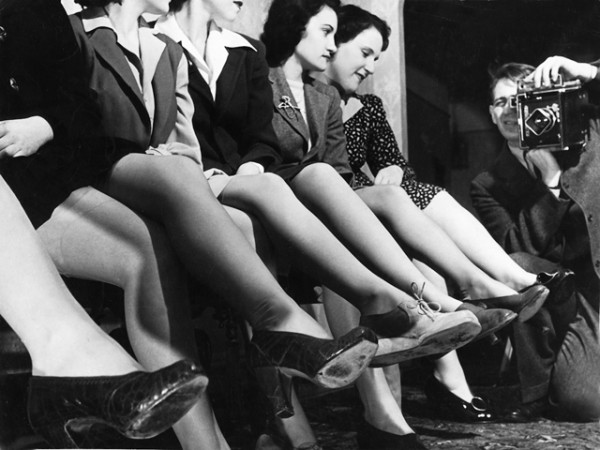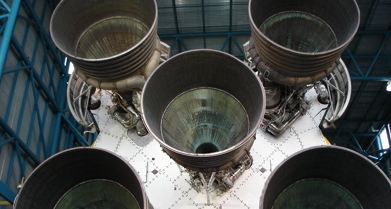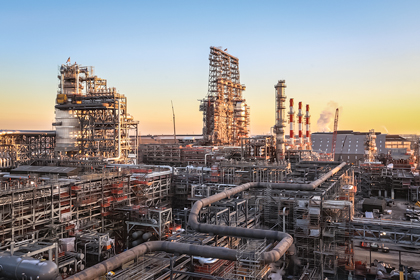Everyday petroleum products extend far beyond plastics and refined fuels for transportation, illumination, and heat.
With an average consumption of more than 20 million barrels of oil a day 2023, the United States depends on petroleum for fuel — and countless other products. Gasoline refined for cars and kerosene for jets and rockets are just part of a world filled with products like nylon and polymers for computers, textiles, hospital equipment, insulation, and much more.
Gasoline accounts for about 20 gallons of the refined products in a 42-gallon barrel of oil. Other widely used petroleum products include propane, naphtha, carbon black, asphalt, heating oil, lubricants, paints and solvents, detergents and waxes (lipstick, toothbrushes, and tires). Natural gas is vital for making fertilizers and synthetic materials.
Recognizing the role of petroleum in society offers an important context for making informed decisions about future of fossil fuels.
Asphalt Paves the Way
President Ulysses S. Grant first directed that Pennsylvania Avenue be paved with Trinidad bitumen in 1876. Thirty-one years later, asphalt derived from petroleum distillation was used to repave the famed pathway to the Capitol. The president’s road paving project covered about 54,000 square yards.
Camphene to Kerosene Lamps
Prior to kerosene, popular lamp fuels included whale oil, lard oil and distilled products that including camphene, a term coined by Augustus Webb of New York in his 1838 patent for a lamp burning distilled spirits of turpentine. One popular variation called Burning Fluid combined the turpentine with alcohol and a small amount of camphor for aroma. It burned brightly and smelled good, but could result in flash fires.

“Women show off their nylon pantyhose to a newspaper photographer, circa 1942,” noted historian Jennifer S. Li in “The Story of Nylon – From a Depressed Scientist to Essential Swimwear.” Photo by R. Dale Rooks (1917-1954).
Nylon, a Petroleum Polymer
The world’s first synthetic fiber – nylon – was discovered in 1935 by a former Harvard professor working at DuPont’s research laboratory in Delaware. The petroleum product “Nylon 6” was created by professor Wallace Carothers, who produced a polymer string that stretched.
Standard Oil and the Kerosene Stove
Francis E. Drury believed a simple and efficient kerosene stove would find many receptive customers in unelectrified rural America. After partnering with John D, Rockefeller and Standard Oil’s established network of sales representatives, the Perfection Stove Company of Cleveland, Ohio, in sold 10 million kerosene-burning stoves by 1915.
Petroleum Product Hoopla
To make Hula Hoops and Frisbees, Arthur Melin and his Wham-O Company partner Richard Kerr, chose a newly invested plastic called Marlex. The world’s first high-density polyethylene, Marlex was invented by two research chemists at Phillips Petroleum Company in Bartlesville, Oklahoma.
Kerosene Rocket Fuel
A 19th century petroleum product made America’s 1969 moon landing possible. Kerosene rocket fuel powered the first stage of the Saturn V of the Apollo 11 mission in July 1969.

Kerosene fueled the Saturn V’s first-stage engines — and today’s latest rocket engines.
The Saturn V’s five first-stage engines burned “Rocket Grade Kerosene Propellant.” They consumed 2,230 gallons per second – generating almost eight million pounds of thrust.
Carbon Black and Oilfield Crayons
Booming Pennsylvania oilfields led to new petroleum products, supplying oil and natural gas feedstock for Binney & Smith Company’s carbon black, which won an award at the 1900 Paris Exposition. The company then took common oilfield paraffin and changed the company’s pigment destiny by famously adding color crayons to children’s imaginations.
Ethyl Anti-Knock Gas
After General Motors scientists discovered the anti-knock properties of tetraethyl lead gasoline in 1921, American motorists would be saying, “Fill ‘er up with Ethyl.” Although it’s properties proved vital for aviation engines during World War II, phase-out for use in car gasoline began in 1976.
Diamond Filling Station
As America’s enthusiasm for “horseless carriages” soared, so did demand for gasoline. S.F. Bowser gasoline pumps fueled a growing number of customers. Here is an educational Library of Congress photo of a 1920 gas station and its attendant on North Capitol Street in Washington, D.C.
Standard Oil Whiting Refinery
Beginning in the 1890s, the Whiting refinery of Standard Oil Company of Indiana processed crude oil into petroleum products a growing number of people and businesses needed.

Construction of a massive, still-operating refinery in Whiting, Indiana, began in 1889.
Popular products at the tome included axle grease for industrial machinery, paraffin wax for candles, kerosene for home lighting. The world’s largest refinery would add gasoline to its production at the dawn of the 20th century. In 2012, BP completed its multi-billion dollar modernization of the Whiting refinery.
Oleaginous History of Wax Lips
Paraffin, a byproduct of the petroleum products of distillation, found its way from refinery to marketplace in the form of candles, sealing waxes – and peculiar American candies. An inspired Buffalo, New York, confectioner soon used fully refined, food-grade paraffin and a sense of humor to find a niche in America’s imagination.
Oil, Vaseline and Maybelline Cosmetics
Here is an unusual petroleum products tale: the crude story of Mabel’s eyelashes. A young New York chemist distills paraffin from Pennsylvania oilfields into petroleum jelly – Vaseline. His incredibly popular invention will lead to creation of an equally popular mascara and Maybelline cosmetics.
_______________________
Recommended Reading: Highlighted History Books from Amazon; Education and Teaching Books; Biographies and Memoirs; Engineering and Transportation; and Politics and Social Sciences. Your Amazon purchase benefits the American Oil & Gas Historical Society. As an Amazon Associate, AOGHS earns a commission from qualifying purchases.
The American Oil & Gas Historical Society (AOGHS) preserves U.S. petroleum history. Become an AOGHS annual supporter and help maintain this energy education website and expand historical research. For more information, contact bawells@aoghs.org. © 2024 Bruce A. Wells. All rights reserved.



